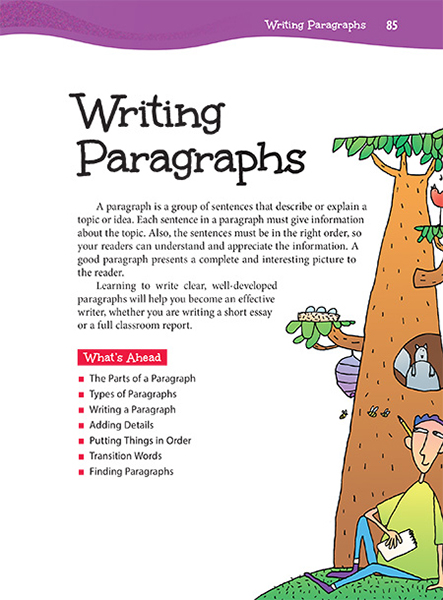Page 085 from

Start-Up Activity
Share with your students a picture of a hamburger or sandwich, with plenty of ingredients stacked between the halves of the bun or the pieces of bread. State that the image illustrates the structure of a paragraph. The topic sentence and ending sentence of the paragraph “hold” all of the supporting details in place. Then tell your students that they will be writing their own delicious paragraphs as they work through this chapter.
Think About It
“The paragraph is a mini-essay; it is also a maxi-sentence.”
—Donald Hall

Start-Up Activity
Share with your students a picture of a hamburger or sandwich, with plenty of ingredients stacked between the halves of the bun or the pieces of bread. State that the image illustrates the structure of a paragraph. The topic sentence and ending sentence of the paragraph “hold” all of the supporting details in place. Then tell your students that they will be writing their own delicious paragraphs as they work through this chapter.
Think About It
“The paragraph is a mini-essay; it is also a maxi-sentence.”
—Donald Hall









